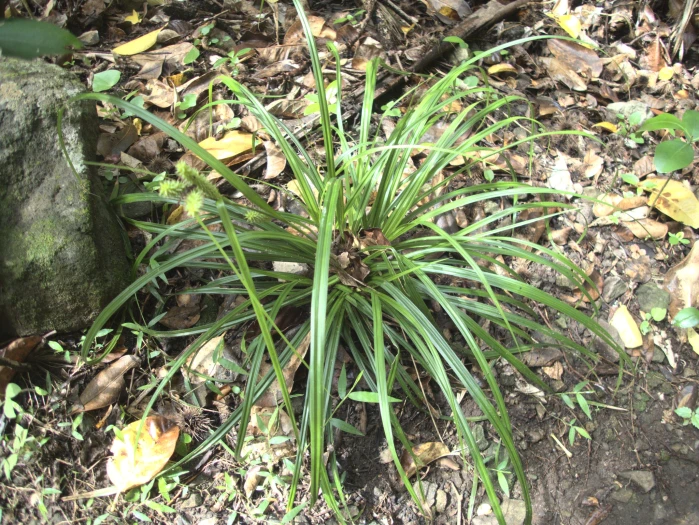Bush Sedge
(Carex forsteri)
Bush Sedge (Carex forsteri)
/
/

Paul Bell-Butler
CC BY 4.0
Image By:
Paul Bell-Butler
Recorded By:
Copyright:
CC BY 4.0
Copyright Notice:
Photo by: Paul Bell-Butler | License Type: CC BY 4.0 | License URL: http://creativecommons.org/licenses/by/4.0/ | Rights Holder: Paul Bell-Butler | Publisher: iNaturalist | Date Created: 2020-11-07T09:51:10-08:00 |






























Estimated Native Range
Climate Requirements for O'Fallon, Missouri
| This Plant | Your Site | Plant Suitability for Your Location | ||
|---|---|---|---|---|
| • Precipitation | 28" - 141" | 38" | Aquatic | Aquatic |
| • High Temp. | 58°F - 76°F | 90°F | Your summers may be too hot for this plant. | Too hot |
| • Low Temp. | -4°F - 53°F | 19°F | Your winter temperatures are normal for this plant | Excellent |
This plant should grow well at your location with about N inches per year (Y minutes per month) of irrigation.
Summary
Carex forsteri, commonly known as Bush Sedge, is an evergreen perennial grass native to a variety of habitats in New Zealand, including coastal and lowland forests, grasslands, and alpine regions. It typically grows to a height of 0.5-4 feet (0.2-1.2 meters) and a width of 1-3 feet (0.3-0.9 meters), forming dense clumps of arching, fine-textured foliage. The plant features inconspicuous brown flower spikes that appear in spring and are followed by small, triangular seeds. Bush Sedge is valued for its ability to provide year-round greenery and its adaptability to a range of garden settings.
Bush Sedge is utilized in cultivation for its textural contrast and as a ground cover in both residential and commercial landscapes. It is particularly effective in mass plantings, along borders, and in wetland or riparian restoration projects. This sedge thrives in moist, well-drained soils but can tolerate drier conditions once established. It is relatively low maintenance, requiring only occasional trimming to remove old foliage. While generally disease-free, it can be susceptible to rust in humid conditions. Carex forsteri is not known to be invasive and is considered a safe choice for gardens outside its native range.CC BY-SA 4.0
Bush Sedge is utilized in cultivation for its textural contrast and as a ground cover in both residential and commercial landscapes. It is particularly effective in mass plantings, along borders, and in wetland or riparian restoration projects. This sedge thrives in moist, well-drained soils but can tolerate drier conditions once established. It is relatively low maintenance, requiring only occasional trimming to remove old foliage. While generally disease-free, it can be susceptible to rust in humid conditions. Carex forsteri is not known to be invasive and is considered a safe choice for gardens outside its native range.CC BY-SA 4.0
Plant Description
- Plant Type: Grass
- Height: 0.5-4 feet
- Width: 1-3 feet
- Growth Rate: Moderate
- Flower Color: N/A
- Flowering Season: Spring, Summer
- Leaf Retention: Evergreen
Growth Requirements
- Sun: Full Sun, Part Shade
- Water: Medium
- Drainage: Medium, Slow
Common Uses
Bird Garden, Deer Resistant, Fire Resistant, Low Maintenance
Natural Habitat
Coastal and lowland forests, grasslands, and alpine regions in New Zealand
Other Names
Common Names: Forster’s Sedge
Scientific Names: Carex forsteri, Carex semiforsteri, Carex cinnamomea, Carex hamata, Carex hamata publ, Carex sexspicata
GBIF Accepted Name: Carex forsteri Wahlenb.